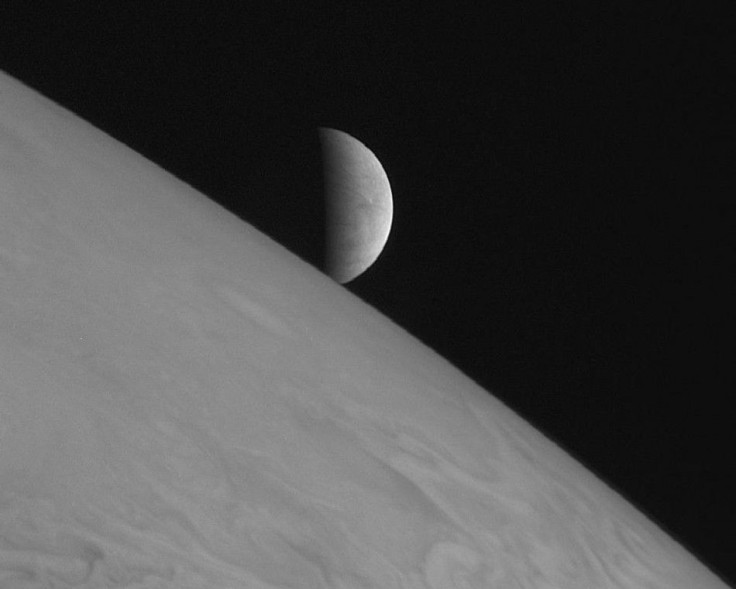Hubble Telescope Captures Rare Occurrence Of Jupiter's Three Moons Moving At The Same Time

A rare occurrence of three moons in Jupiter moving across the planet at the same time was captured by National Aeronautic and Space Administration's Hubble Telescope on Jan. 24. The sight happens rarely, just about once or twice in a decade.
Jupiter has many moons but only four Galilean satellites are famous. Three of the four Galilean moons, namely Io, Callisto and Europa, were captured by the Hubble Telescope, a telescope that has been in operation since the 90s. The moons were named Galilean after astronomer Galileo Galilei who discovered them in the 17th century. The occurrence of all three moons together lasted for a span of about 42 minutes. Ganymede, the fourth moon, was outside Hubble's field of view.
According to Space.com, Callisto, Ganymede and Europa had orbital periods of 16.7, 7.2 and 3.6 days, respectively. Io is the innermost of the moons and completes a lap around the planet once every 1.8 days. In the entire solar system, Ganymede is the largest natural satellite with a diameter of 5,260 kilometres, while Europa is the smallest Galilean moon with a diameter of 3,100 kilometres.
On Feb. 5, representatives of Space Telescope Science Institute in Baltimore who operate the telescope, wrote in a statement that the moons in the photos captured by the Hubble had distinctive colours. Callisto's cratered surface was brownish, Europa's icy surface was yellow-white and Io's volcanic surface was orange.
They explained the fuzziness of a few of the shadows depended on the distance of the moon from Jupiter. They added if the moon was farther away from the planet, then the shadow was softer as the shadow was spread more across the disk.
Meanwhile, in related news, scientists believe Europa is the best bet in the solar system to host alien life. Officials from NASA said it was mapping out a robotic mission to Europa, which would be ready for launch by mid-2020s.
To report problems or to leave feedback about this article, e-mail: afza.kandrikar@gmail.com.





















